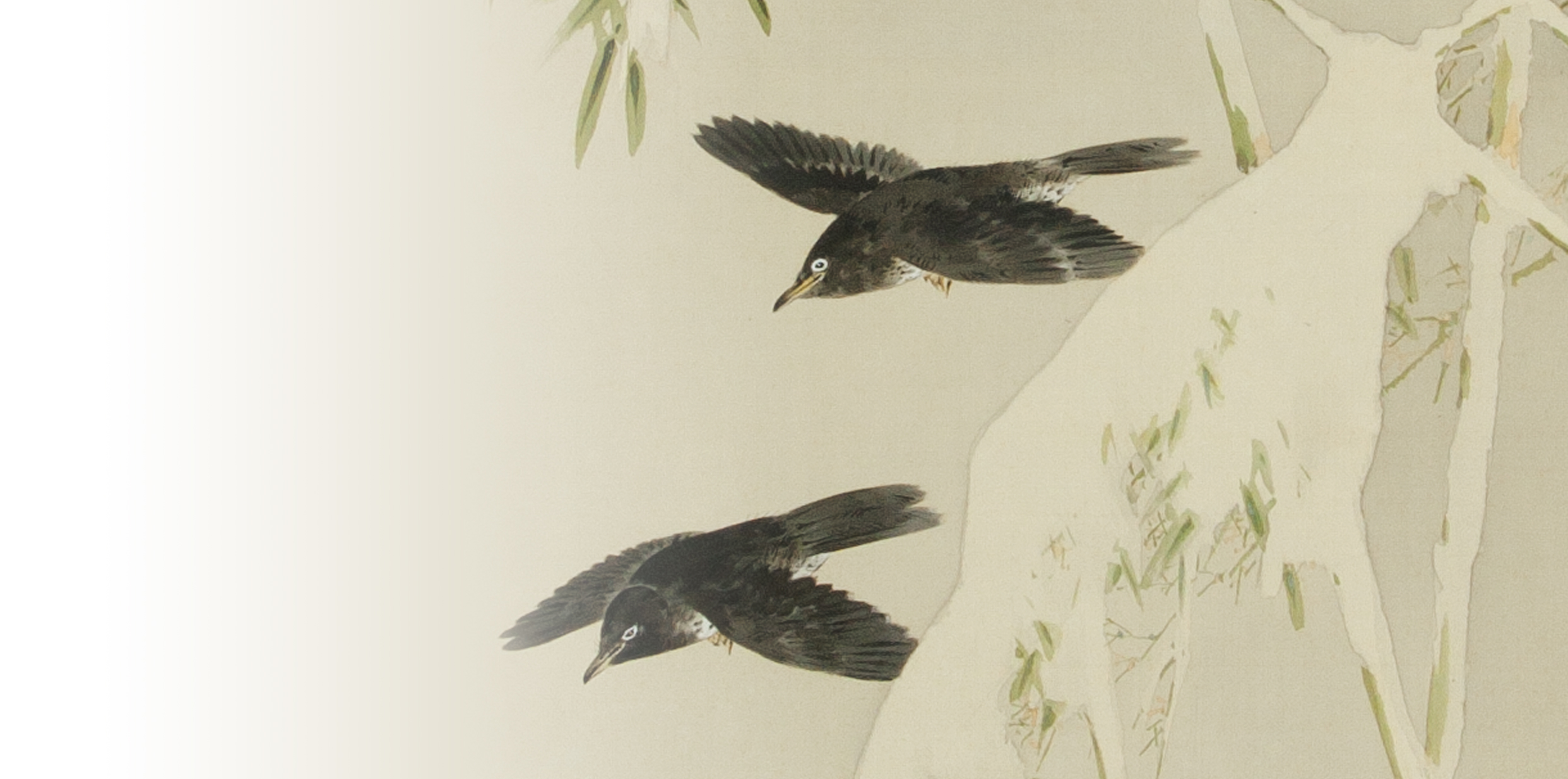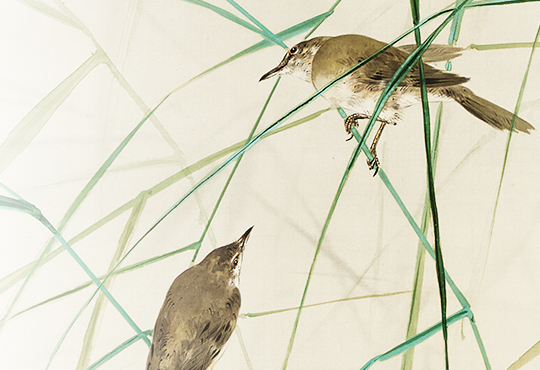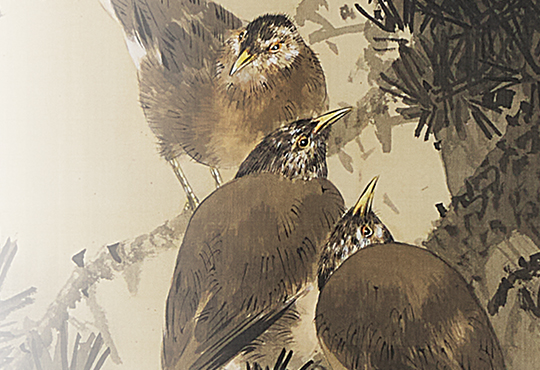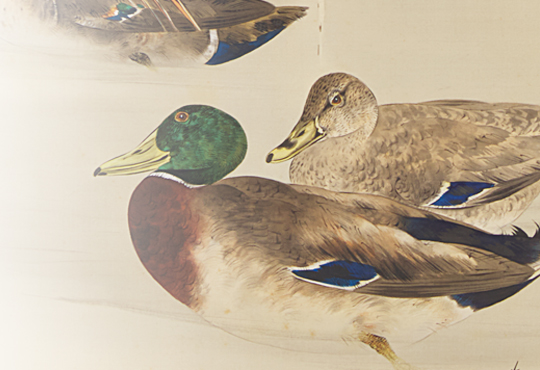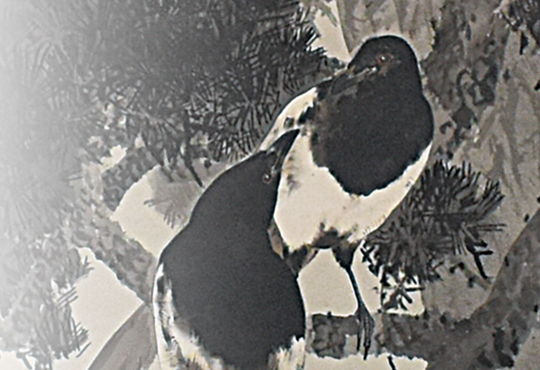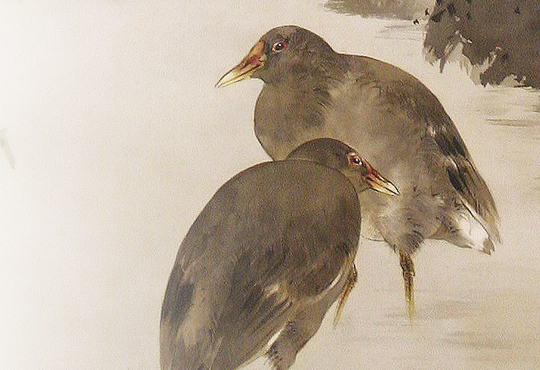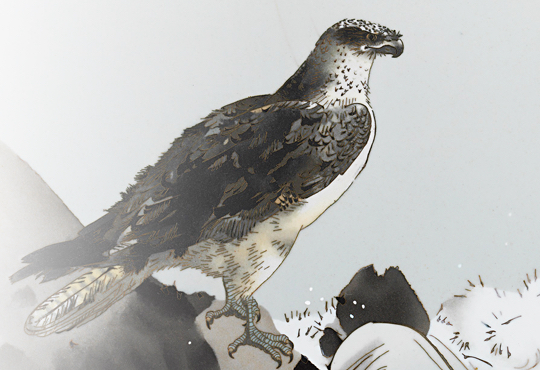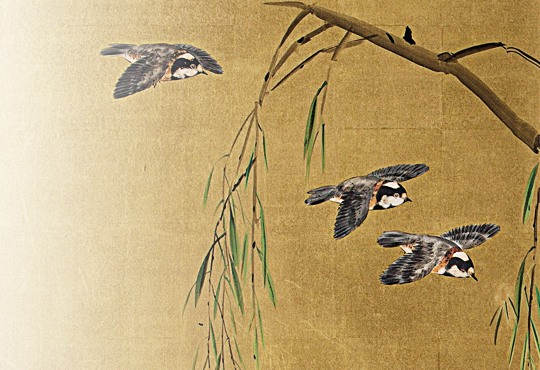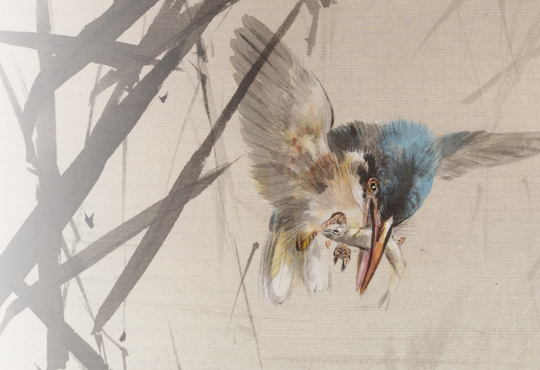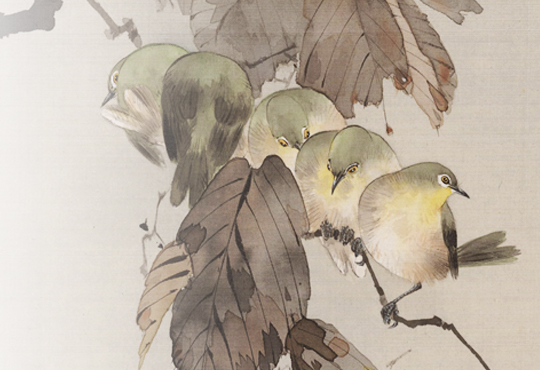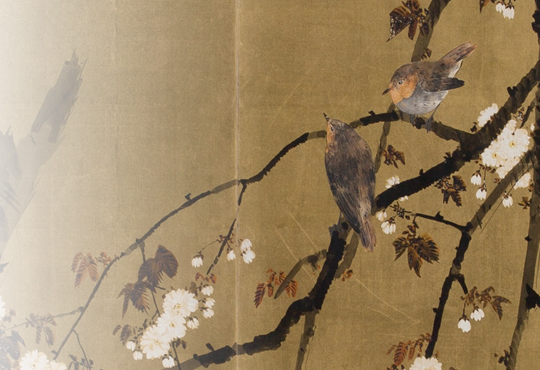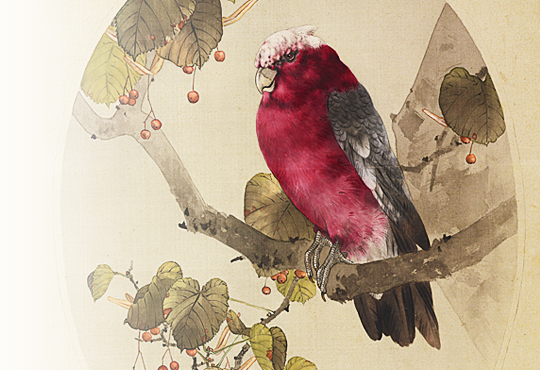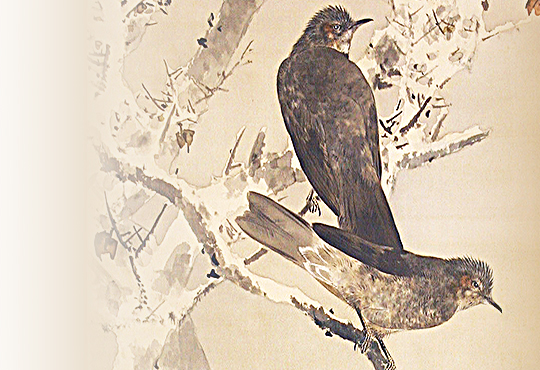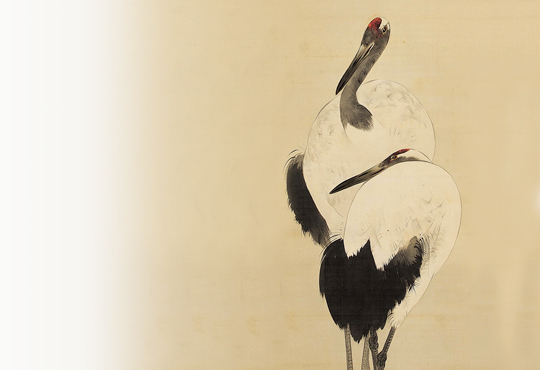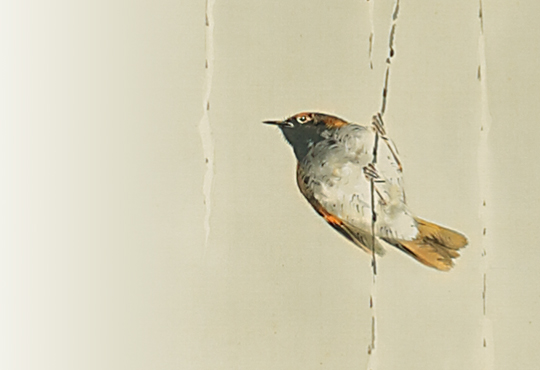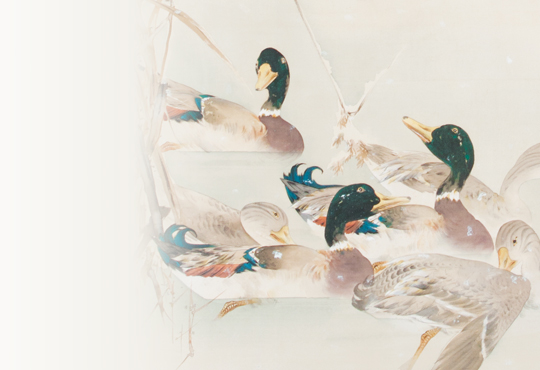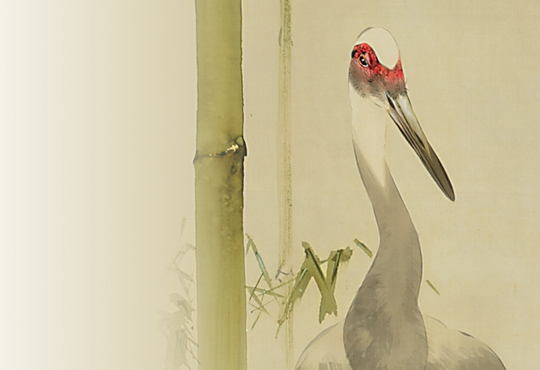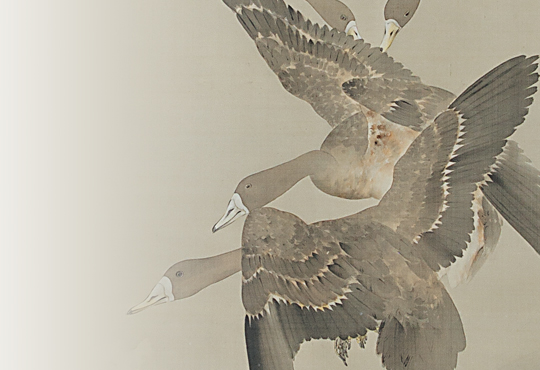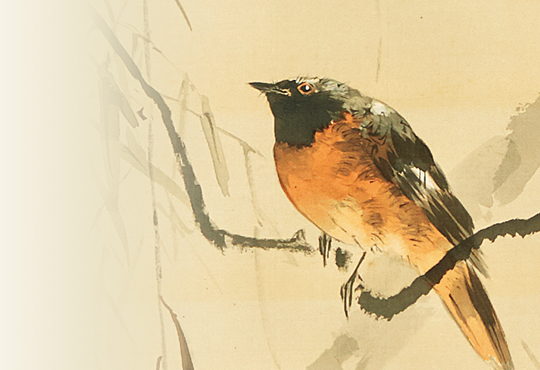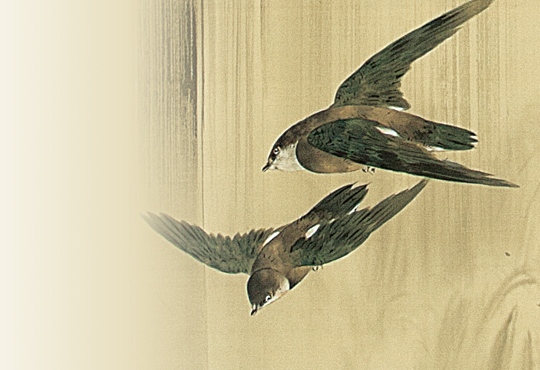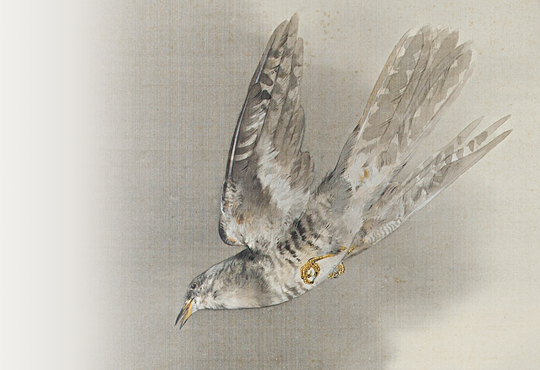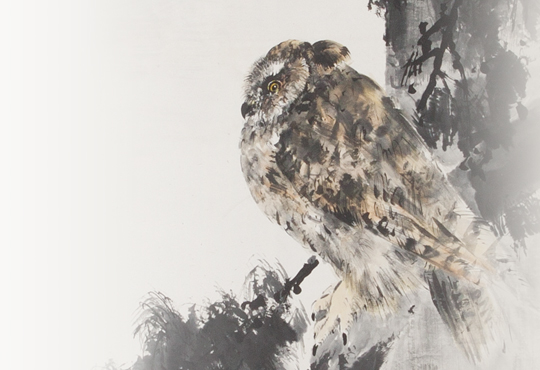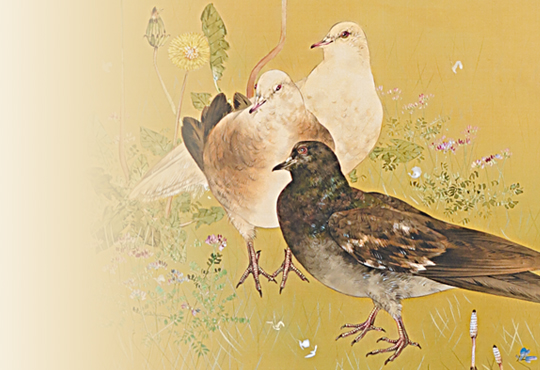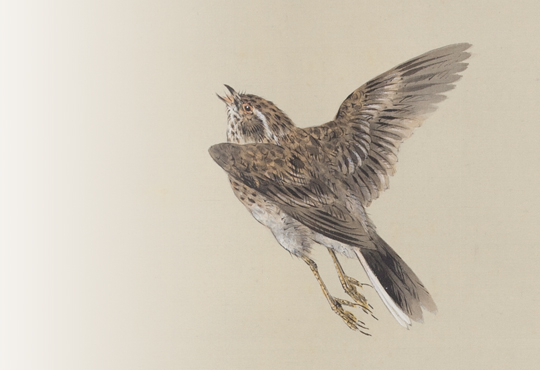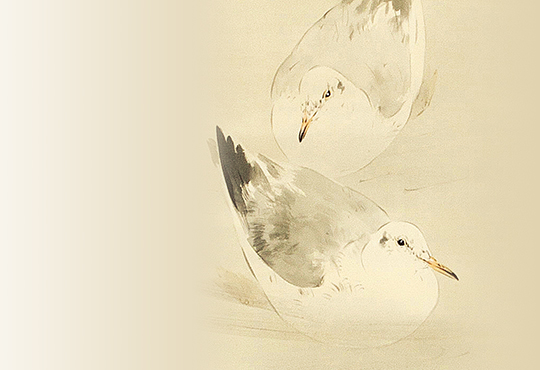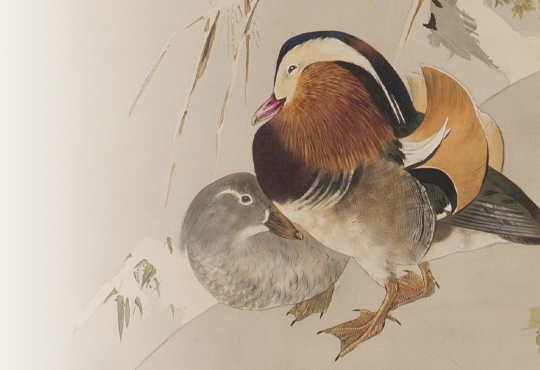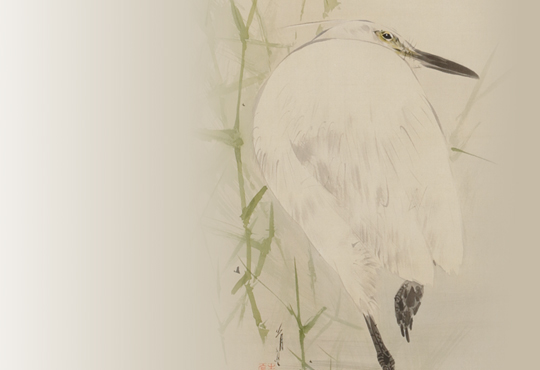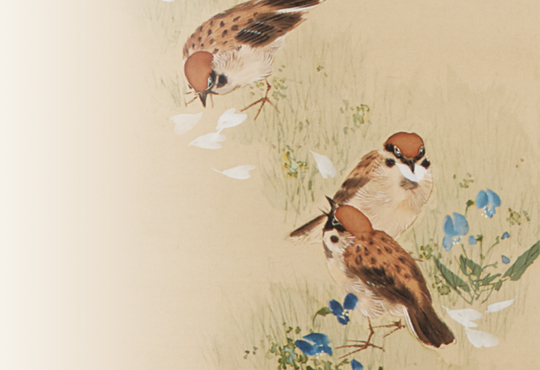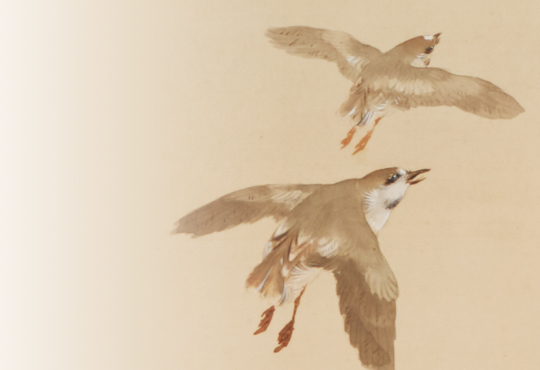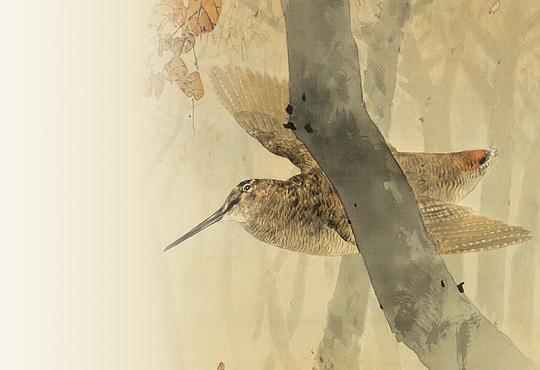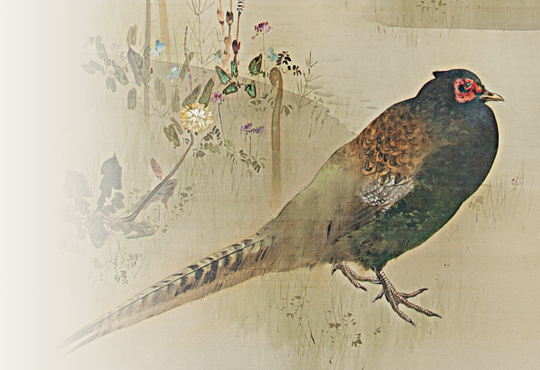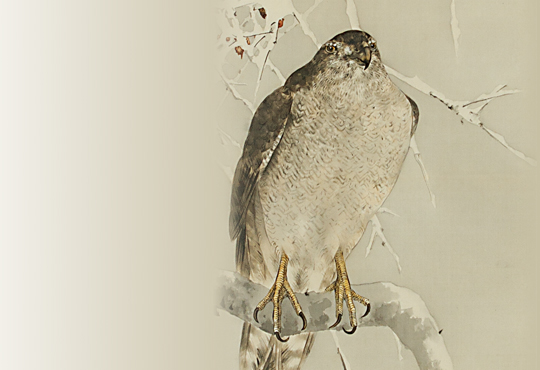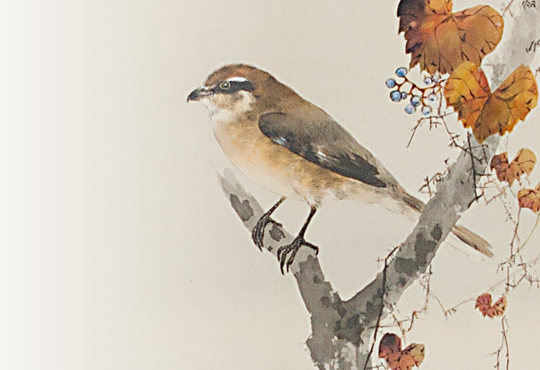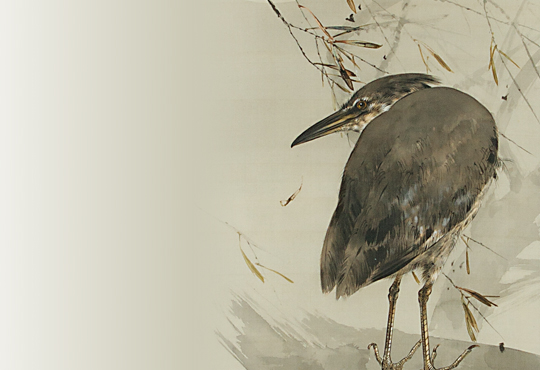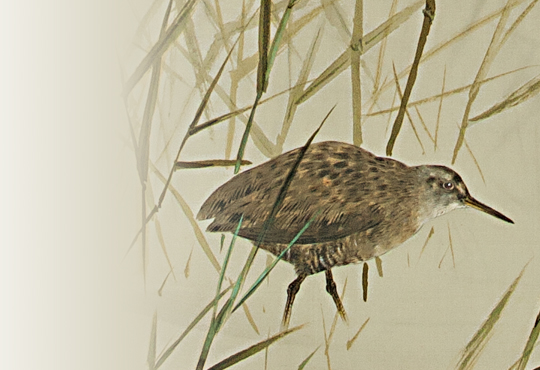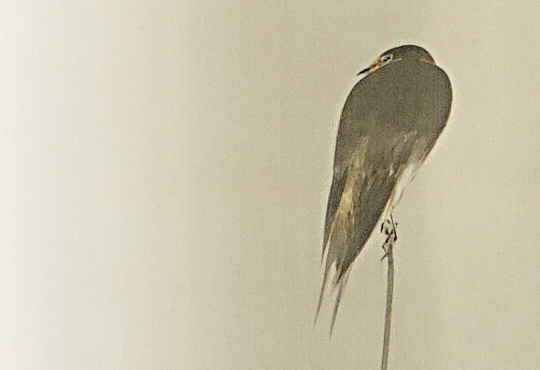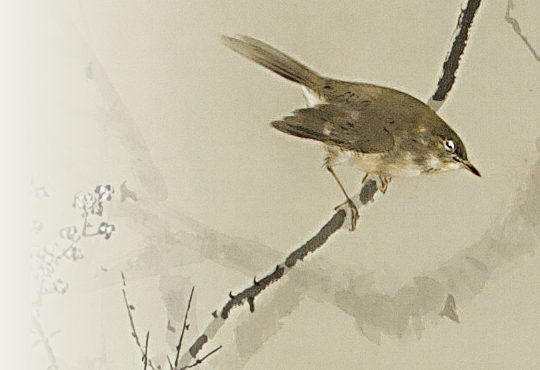A set of twelve scrolls,
color on silk, with a box signed and sealed by the artist
size : 115×40 ㎝ /212×54 ㎝
vol.01 Japanese Thrush and Snowscapes
Watanabe Seitei is a painter of the birds.
All the birds he illustrates are so lively that it seems as if they would start moving, and we can feel the birds’ heartbeat and the warmth in spite of the stillness of the paintings.
In this essay, I would like to examine the birds Seitei depicts from ornithological perspective.
“January” in the twelve months scroll illustrates the scene in which two birds about to fly away. While you can see the weight of the wet snow on the lowering bamboo leaves, the small birds are flying lightly. The tone of the painting is almost monochrome although bamboos are colored faintly in green.
The little birds here are called Japanese Thrush Turdus cardis. Their body length is 21cm, a little bigger than sparrows. They are migrating birds that spends summer in forests in either China or Japan, and travel to south of China or southeast Asia during winter, which makes them the symbolic summer birds in Japan. They breed in lowlands and eat insects and fruits. Each of them has unique song, that are very complex and beautiful, although they might not be known as singing birds as much as Nightingale. As far as I know, Japanese Thrush is not a common motif for painting, and the only one I know that depicts them accurately is the painting by Kumagai Morikazu.
Let’s take a look at the description of the birds.
They are both adult males, as they differ from female or youngers. From head to tail, the back is all black, and chest and belly are white with small dots. He depicts male birds quite accurately with yellow in legs and beaks, and the pale color in the eye-rings.
Wings drawing is even more accurate. The position, shape, size and number of the flight feathers on the wings are genetically determined, and they are categorized into three parts depending on the role. I presume Seitei knew the number of primary flight feathers on this bird for he painted only 9 feathers out of 10: one is too short to be visible.
On the other hand, overall figure is not so precise. (I could not identify the bird species on the first sight.) The bird on the upper right does not have accurate description of the body posture and shape. The right wing is facing up oddly so that it lacks balance with other parts of the body. The head is drawn quite large as well that the neck is almost invisible.
When you see the actual Japanese Thrush, the color of the eye-rings and the beaks are the most notable. However, in this painting, these characteristics of the bird are not illustrated as much. The color of the beaks is painted faint yellow, and the eye-ring is colored in white. We can see that only in this work. In other work, Seitei illustrates this bird’s coloring accurately. Therefore, I can only imagine that Seitei had certain intention for coloring differently in this piece.
Let’s take a closer look at the scenery and the birds.
Japanese Thrush migrates across the ocean for their wintering, so it is known as the summer bird in Japan. (there are some exceptional instances where they spend winter in southern Japan) Therefore, they are not usually painted in the snowscapes. I am not certain why Seitei painted them in the winter scenery, but I presume he wanted to create contrast between white snow and blackness of birds knowing the mismatch of the season. Scientifically speaking, birds like White-cheeked Starling Sturnus cineraceus and Grey Bunting Emberiza variabilis would fit the winter bamboo forest better for they are known as the winter birds. It’s obvious that Seitei knew the Starlings as he painted it in his famous work “Mandarin Ducks in the Snow”, a collection of The National Museum of Modern Art, Tokyo. Perhaps, the Starlings didn’t fit for this painting because it is not entirely black but there are white parts on the face and the tip of the tail. The same can be applied on the Buntings as they are dark grey and not black, and they are not the birds Seitei was looking for.
In sum, I hypothesize that Seitei painted Japanese Thrush in the snow because of its color. And quite possibly, Seitei intentionally painted the eye-ring in white to accentuate the black-and-white contrast.
Author : Masao Takahashi Ph.D. (Ornithologist)
Dr. Masao Takahashi was born 1982 in Hachinohe (Aomori prefecture) and graduated from Rikkyo University’s Graduate School of Science. Dr. Takahashi specializes in behavioral ecology and the conservation of birds that inhabit farmlands and wet grasslands. Focusing on the relation between birds and art, he has participated in various museum and gallery talks.
